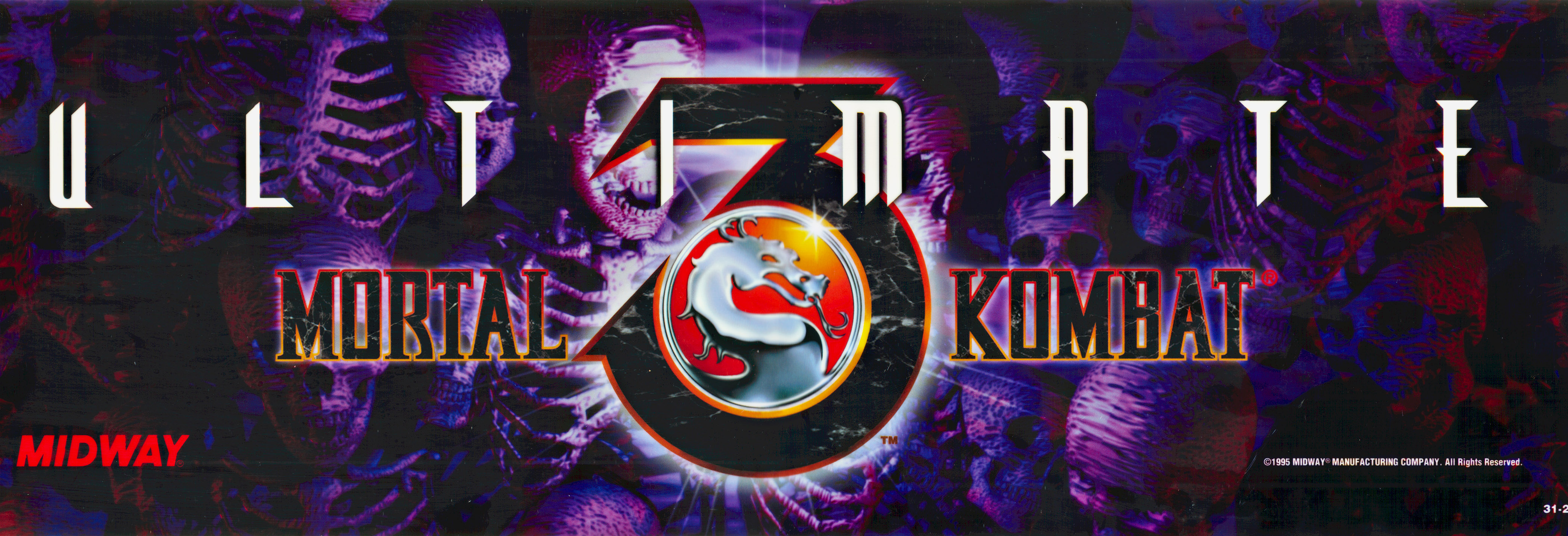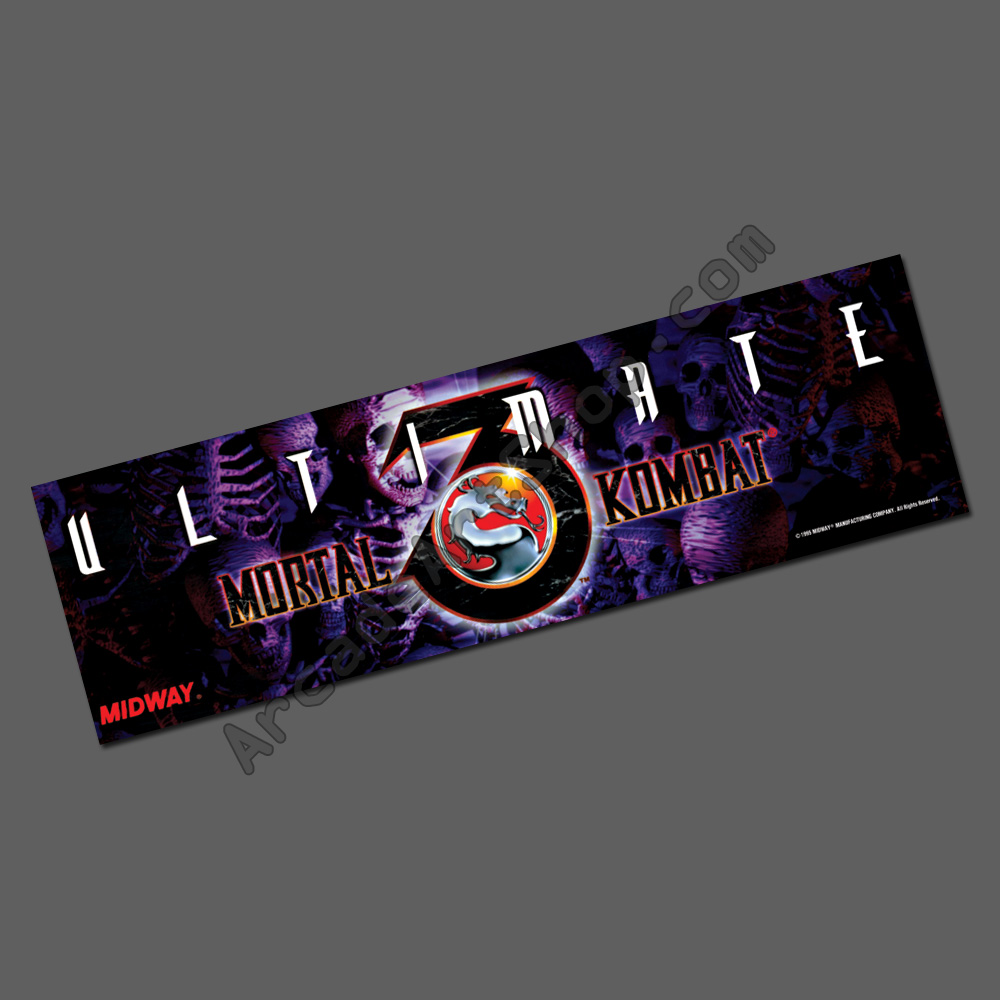Ultimate Mortal Kombat 3 (UMK3) is a fighting game in the Mortal Kombat series, originally developed and released by Midway Games to arcades in 1995. It is an update of 1995's earlier Mortal Kombat 3 (MK3) with an altered gameplay system, additional characters and stages, and some new features.
Several home port versions of the game were soon released after the arcade original, although none were completely identical to the arcade version. Later home versions emulated the arcade original with more accuracy, including Mortal Kombat Arcade Kollection, which included the game alongside its predecessors Mortal Kombat and Mortal Kombat II. Some versions were released under different titles: Mortal Kombat Advance for the Game Boy Advance and Ultimate Mortal Kombat for the Nintendo DS. The iPhone/iPod version recreates the game using a 3D graphics engine.
UMK3 was well received and has been considered a high point for the Mortal Kombat series. It was later updated to include more content from previous games in the series as part of the console-exclusive Mortal Kombat Trilogy.
Several ninja characters absent from Mortal Kombat 3 return in Ultimate Mortal Kombat 3, including Kitana, Jade, Reptile and Scorpion on the prototype version; a new Ultimate Kombat Code was added in revision 1.0 to enable Mileena, Ermac and Classic Sub-Zero as secret characters. Two new gameplay modes were introduced: the 2-on-2 mode which was similar to an Endurance match but with human players on both sides, and a new eight-player Tournament mode.
Several miscellaneous features were added to and changed in UMK3. The original red portal background used for the 'Choose Your Destiny' screen is now blue and an extra Master difficulty is present. In the additional 'Master' difficulty setting, Endurance Matches return, in which the player can face as many as three opponents in a given round; these had not been seen in the series since the first Mortal Kombat. Shao Kahn's Lost Treasures - selectable prizes, of which some are extra fights and others lead to various cutscenes or other things - are introduced after either the main game or the eight-player tournament are completed. Shang Tsung's transformations are accompanied by announcements of the name of the character he is changing into.
To balance the gameplay, some characters were given new moves and some existing moves were altered. Some characters were given extra combos and some combos were made to cause less damage. Chain combos could be started by using a jump punch (vertical or angled) or a vertical jump kick, which creates more opportunities to use combos. Combos that knock opponents in the air no longer send one's opponent to the level above in multi layered levels; only regular uppercuts do this.
The computer-controlled opponent AI was improved in the game. However, three new flaws were introduced along with the revisions: while backflipping away from an opponent, if the player performs a jump kick, the AI character will always throw a projectile; this leaves the computer character vulnerable to some attacks and can easily lead into a devastating combo. If the player walks back-and-forth within a certain range of the AI character, the opponent will mimic the player's walking movements for the whole round and never attack. If the computer opponent is cornered, the player can repeatedly perform punches without the AI character stumbling back, thus allowing the player to win easily.
UMK3 features several new backgrounds: Scorpion's Lair/Hell (this stage also contains a new Stage Fatality, where an uppercut can send the opponent into a river of lava); Jade's Desert (in a reference to his MK3 ending, Cyrax is seen stuck waist-deep in sand in the background); River Kombat/The Waterfront; Kahn's Kave/The Cavern; Blue Portal/Lost (a combination of the background from the UMK3 'Choose Your Destiny' screen, the Pit 3 bridge, and the mountains and bridge from the Pit II in Mortal Kombat II); Noob's Dorfen (based on the Balcony stage, which can now be played using a Kombat Kode without having to fight Noob to see it as in MK3). Before reaching any of the original MK3 backgrounds in 1- or 2-player mode, the game must cycle through all of the UMK3 exclusive backgrounds twice. Scorpion's Lair, Secret Cave and Abandoned River stages are selectable by using a password while on the missing Bank Stage cycle. In Scorpion's Lair, fighters can uppercut each other into Kahn's Kave.
Some elements from MK3 are missing in UMK3. The only biographies featured are those of Kitana, Jade, Scorpion and Reptile (the ninja characters who were not included in MK3), which are the only four shown during attract mode, while all of the biographies and the full-body portraits of the MK3 characters are missing. The biographies that do appear in the game are presented differently from those in MK3, as are the endings. The storyline images and text do not appear. Finally, the Bank and Hidden Portal stages from MK3 were removed (Jade's Desert serves as a placeholder where The Bank stage used to appear once the player reaches the original MK3 level cycle). More details about this game can be found on Wikipedia.org. |
4 different online emulators are available for Ultimate Mortal Kombat 3. These emulators differ not only in the technology they use to emulate old games, but also in support of various game controllers, multiplayer mode, mobile phone touchscreen, emulation speed, absence or presence of embedded ads and in many other parameters. For maximum gaming enjoyment, it's important to choose the right emulator, because on each PC and in different Internet browsers, the individual emulators behave differently. The basic features of each emulator available for this game Ultimate Mortal Kombat 3 are summarized in the following table:
|


